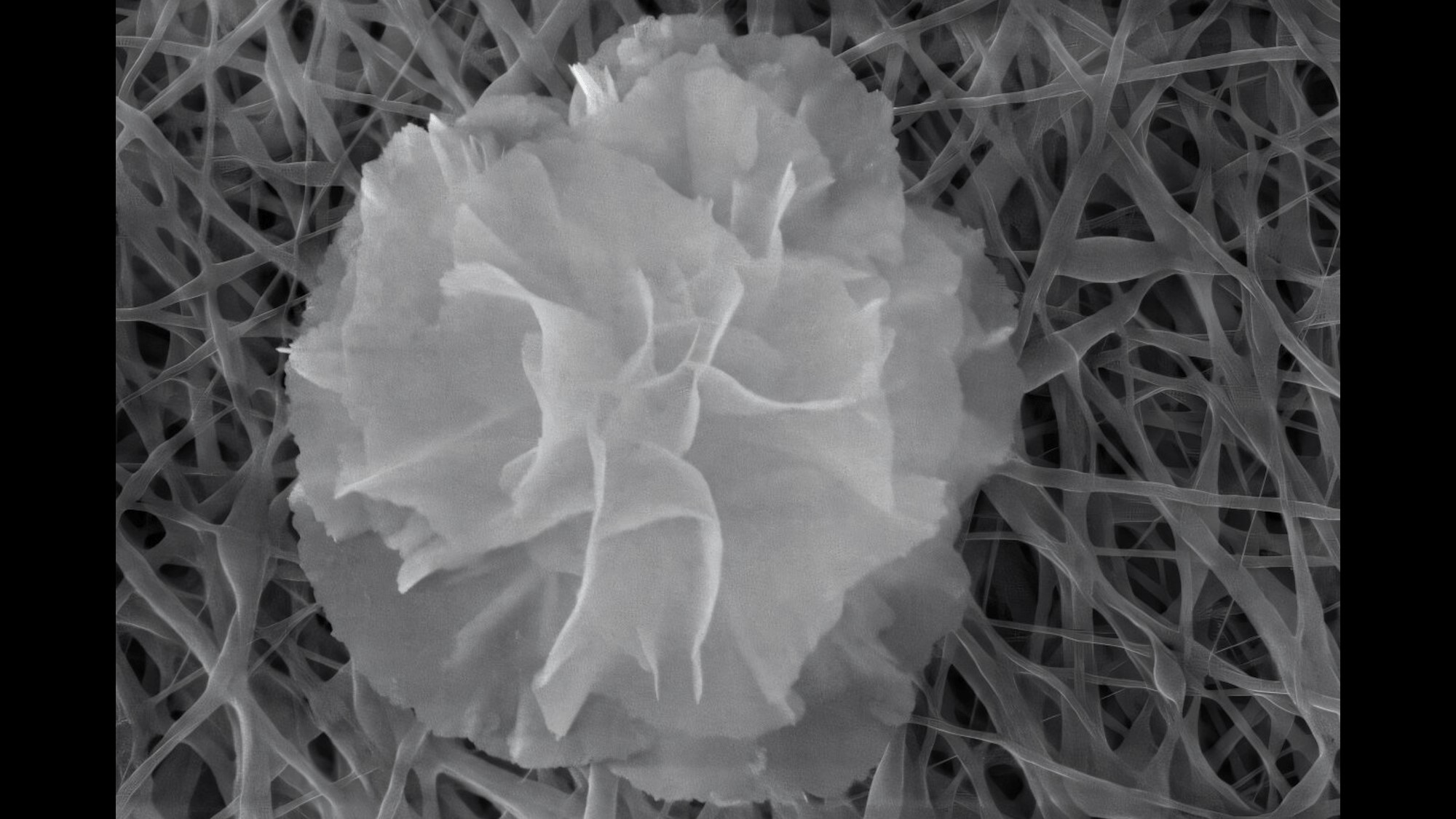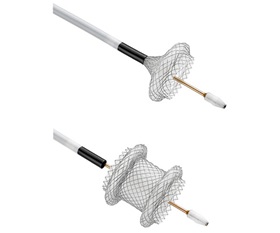Future Bandages May Feature Nanoflower Technology
Despite their small size, flower petals collectively create a remarkably large surface area. The same principle applies at the microscopic scale with “nanoflowers,” chemical compound formations that develop into plantlike shapes. With this concept in mind, researchers at Italy’s University of Genoa have designed an innovative nanostructure featuring carnation-like nanoflowers, providing ample surface area to accommodate numerous wound-healing drug molecules.

Figure 1. Next-Generation Bandages Enhanced with Nanoflower Technology.
The medical breakthrough is outlined in a study published in ACS Applied Bio Materials. According to the researchers, the bandage prototype is crafted using two polyphenol-based materials—copper phosphate and tannic acid—both known for their anti-inflammatory and antibiotic properties. When combined in a saline solution, these compounds naturally self-assemble, forming distinct, flower-like nanostructures. Scientists then carefully integrate these nanoflowers onto small strips of electrospun nanofabric. Figure 1 shows Next-Generation Bandages Enhanced with Nanoflower Technology.
"Polyphenols, natural compounds rich in phenolic structures, have gained significant attention for their antioxidant, anti-inflammatory, antibacterial, and anticancer properties, making them highly valuable for biomedical applications," the research team stated. "However, the green synthesis of polyphenol-based materials using cost-effective and environmentally friendly strategies remains of great importance."
With the dressings prepared for testing, the research team introduced the nanoflower-infused bandage samples into cultures of harmful bacteria, including and. According to a January 31st announcement, the nanoflower-coated fabrics not only “inactivated” the bacteria but did so by disrupting antibiotic-resistant biofilms—all while safeguarding lab-grown human cells.
Researchers highlight that this nanoflower-based approach is both cost-effective and highly efficient, offering a promising method to accelerate wound healing and combat infections. Beyond medical applications, nanoflowers show potential in diverse fields. A separate study, published in Advanced Materials in October 2024, suggests their usefulness in real-time imaging, wastewater purification, and even microrobotics.
The Science Behind Nanoflowers
Nanoflowers are microscopic, flower-like structures formed through the self-assembly of chemical compounds. These formations provide an exceptionally large surface area, making them ideal for medical applications, particularly in drug delivery and wound healing. Researchers have harnessed this unique property to develop bandages embedded with nanoflowers for enhanced healing.
How Nanoflowers Are Created
Scientists at Italy’s University of Genoa developed a novel method using two polyphenol-based materials—copper phosphate and tannic acid. When mixed in a saline solution, these compounds naturally self-assemble into flower-like nanostructures. These nanoflowers are then carefully integrated into electrospun nanofabric, forming the foundation for next-generation wound dressings.
Fighting Bacteria with Nanoflower Bandages
Once incorporated into bandages, the nanoflowers were tested against harmful bacteria, including E. coli, Pseudomonas aeruginosa, and Staphylococcus aureus. The nanoflower-coated dressings effectively inactivated these bacteria and disrupted antibiotic-resistant biofilms, all while ensuring the safety of human cells. This breakthrough offers a promising solution to combat infections and speed up the healing process.
Advantages of Nanoflower-Based Dressings
Nanoflower-infused bandages provide multiple benefits over traditional wound dressings. They are cost-effective, eco-friendly, and highly efficient in fighting infections. Their polyphenol composition gives them antioxidant, anti-inflammatory, antibacterial, and even anticancer properties, making them valuable for a wide range of biomedical applications.
Beyond Medicine – The Future of Nanoflowers
The potential of nanoflowers extends beyond wound care. A recent study published in Advanced Materials highlights their applications in real-time imaging, wastewater purification, and microrobotics. As research progresses, these microscopic structures may revolutionize multiple industries, offering sustainable and innovative solutions across science and technology.
Source: POPULAR SCIENCE
Cite this article:
Priyadharshini S (2025),"Future Bandages May Feature Nanoflower Technology", AnaTechmaz, pp. 334
















